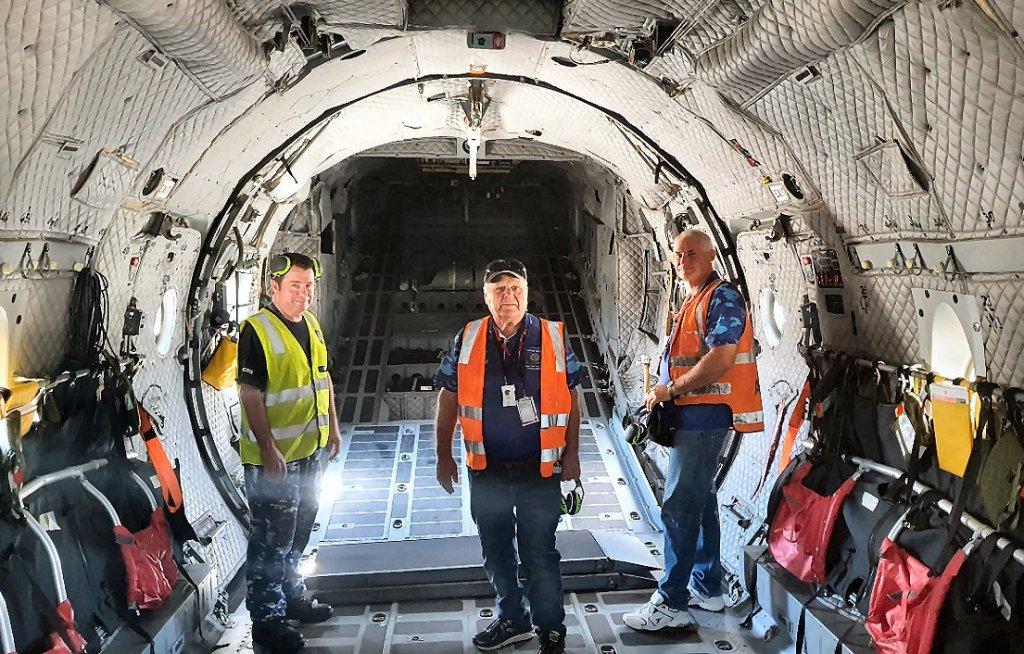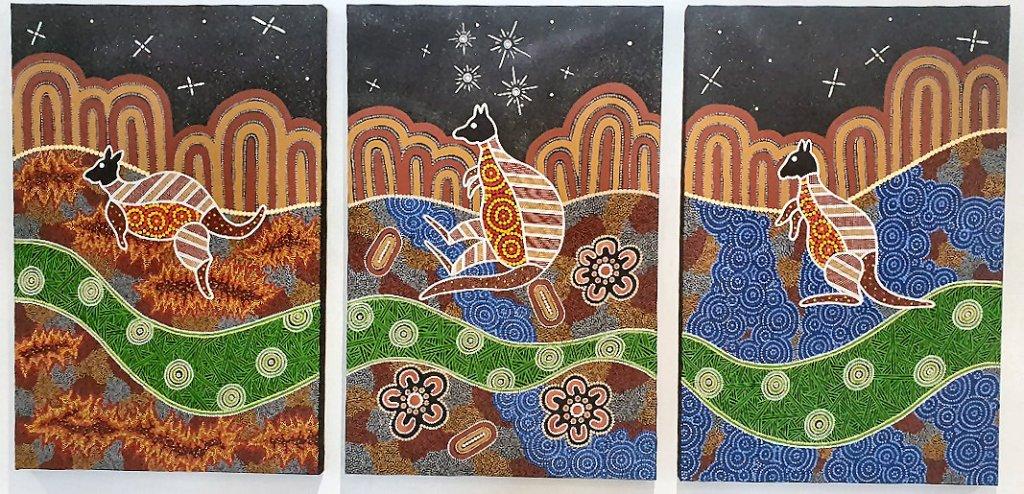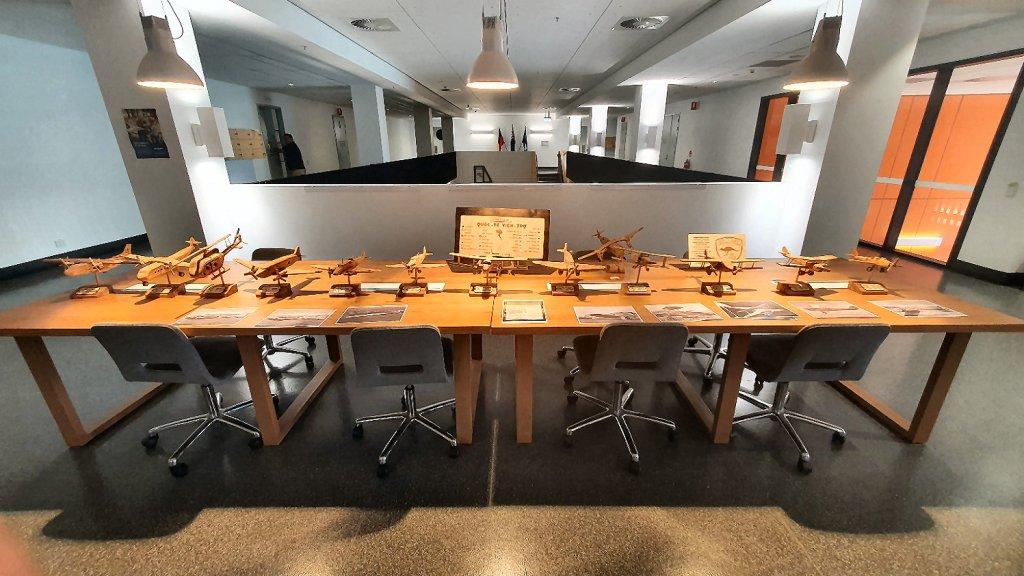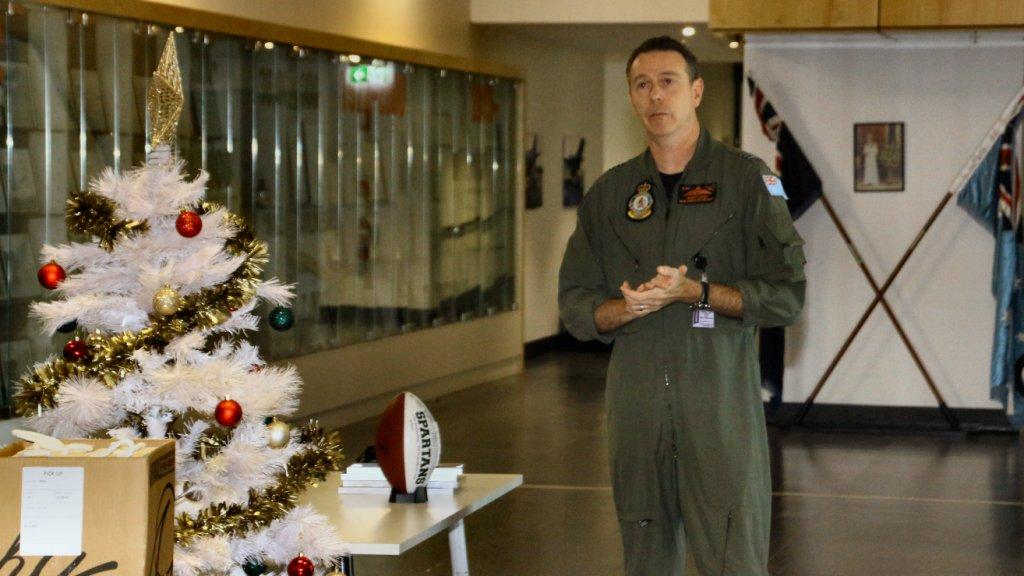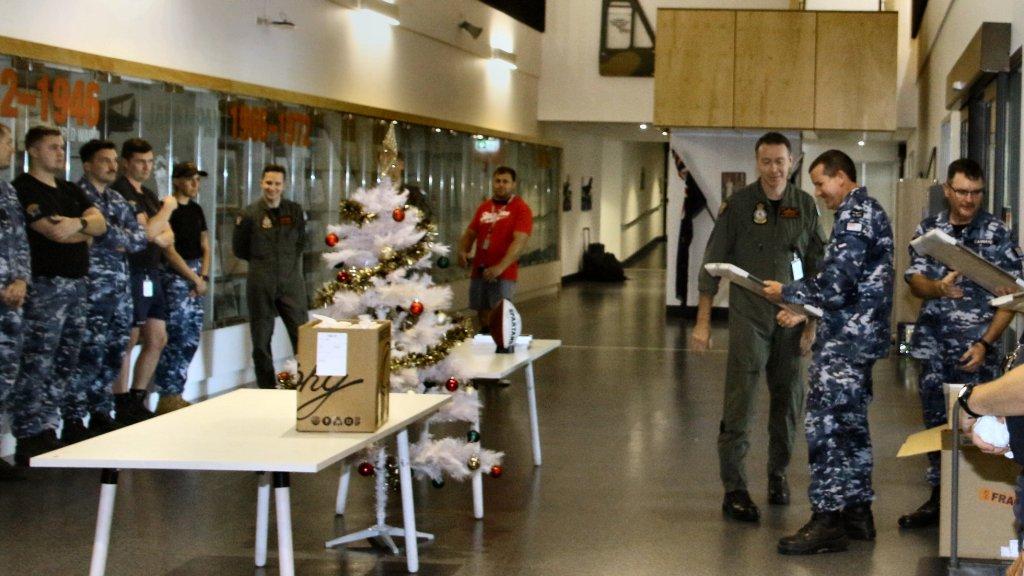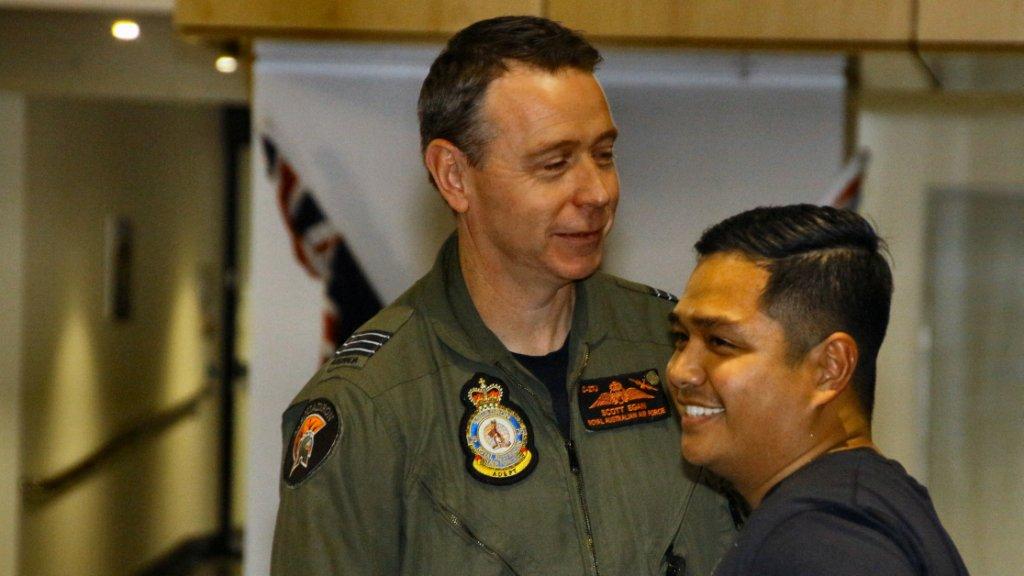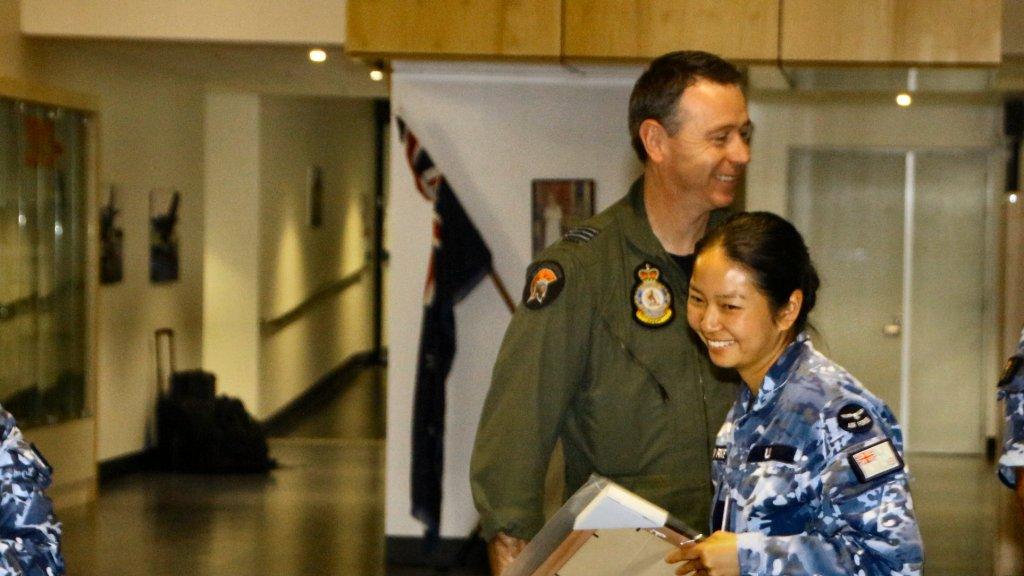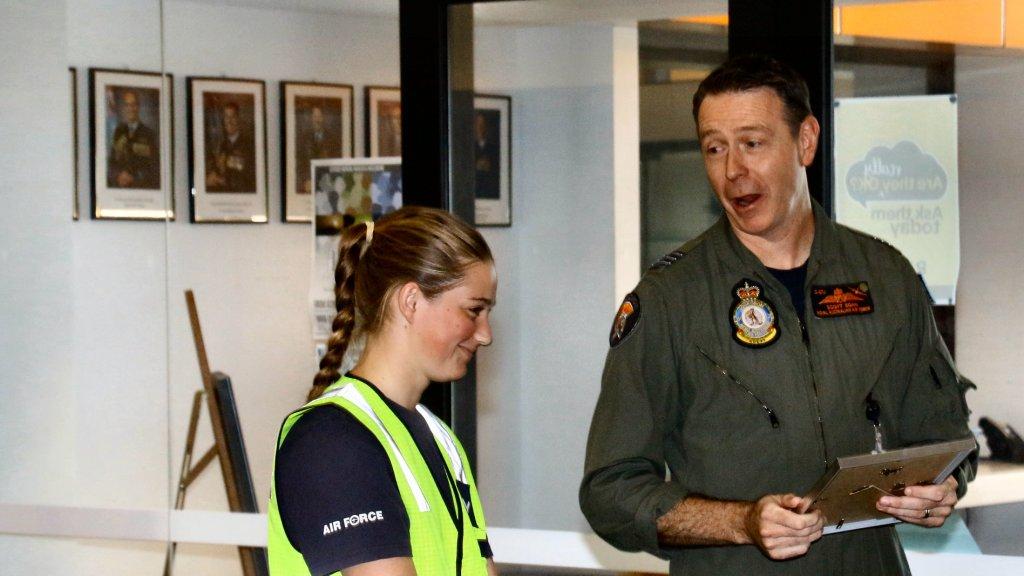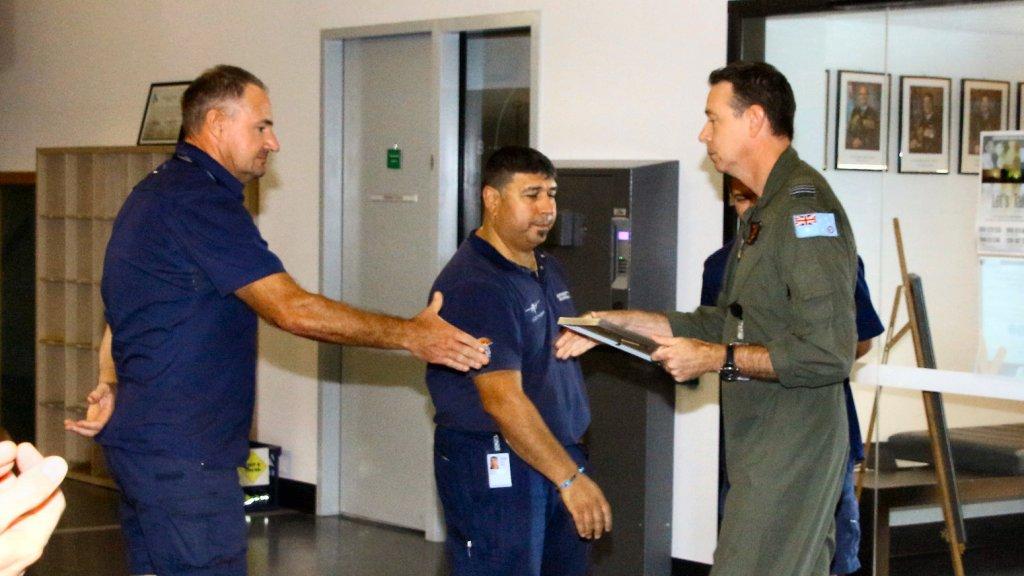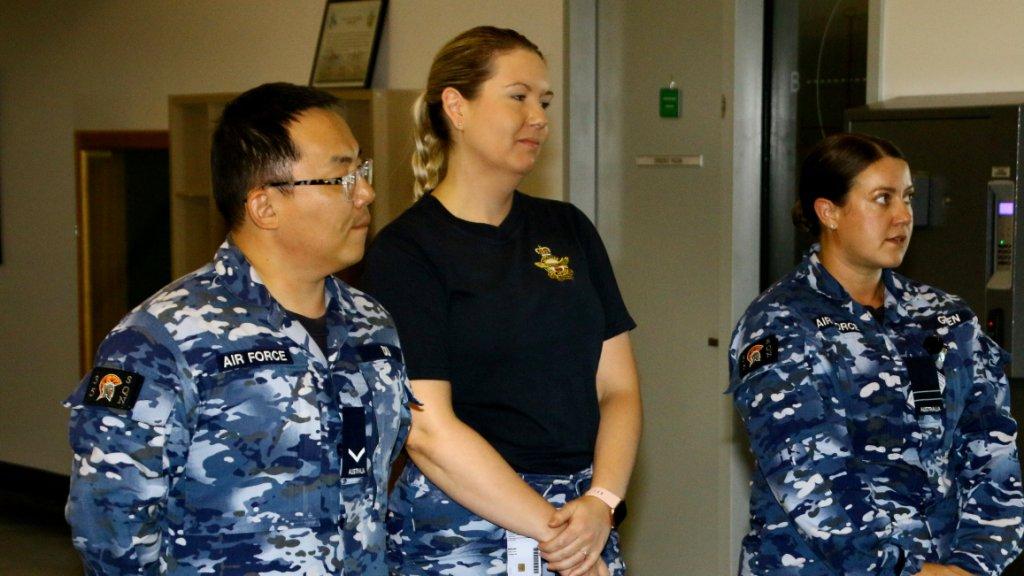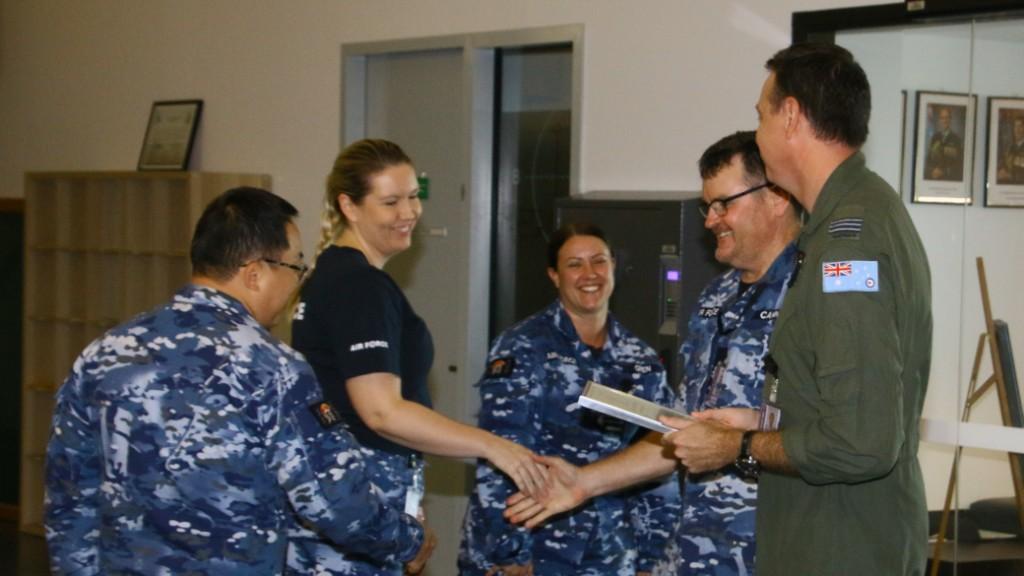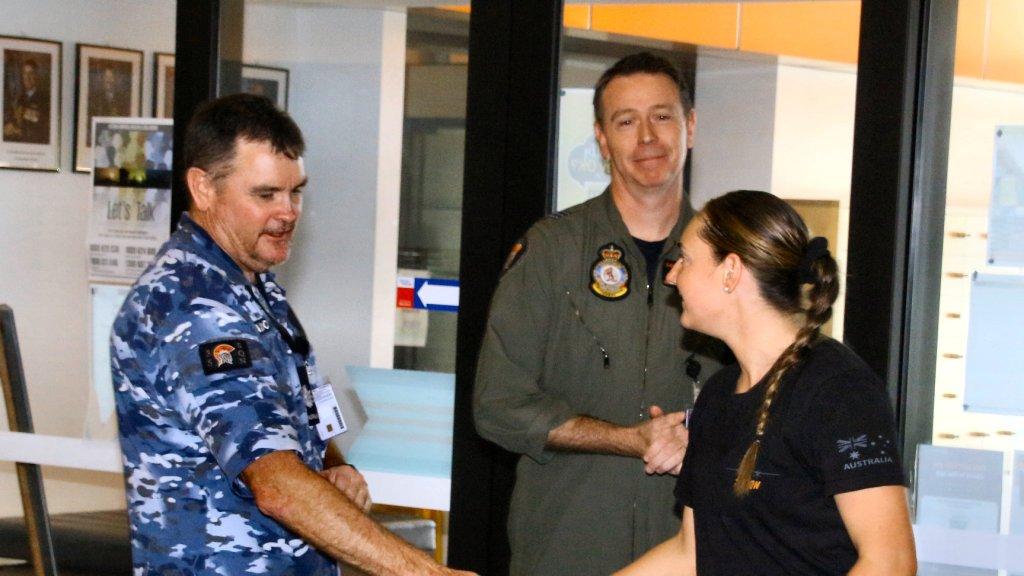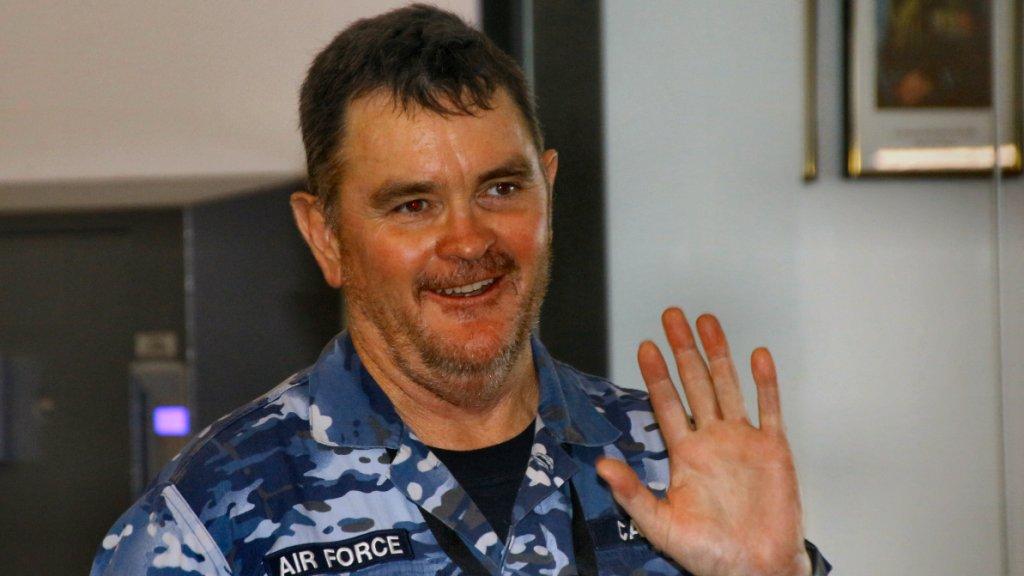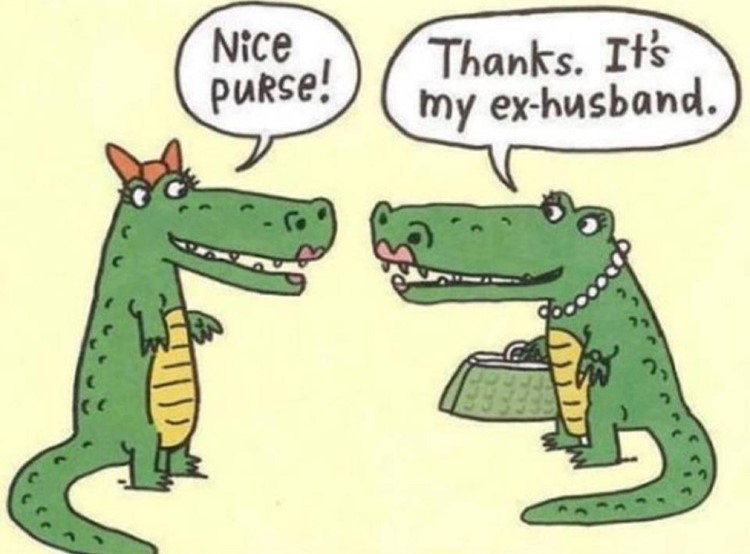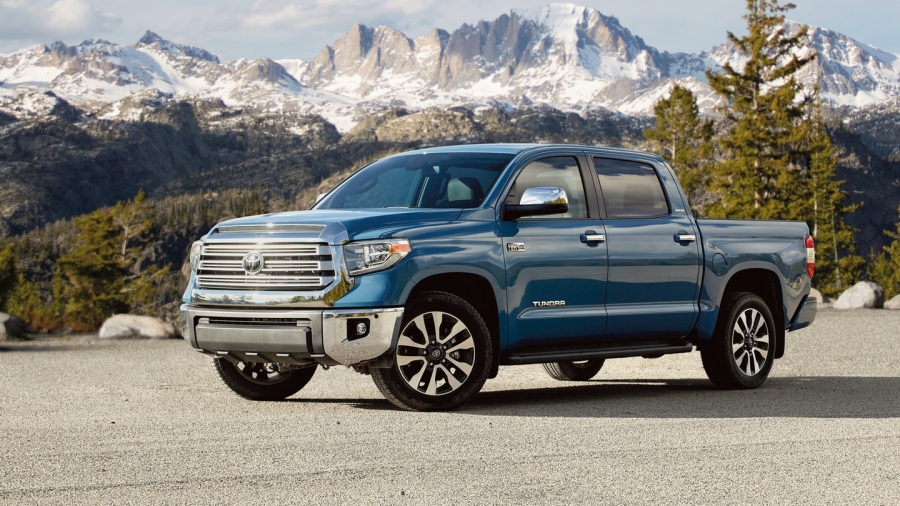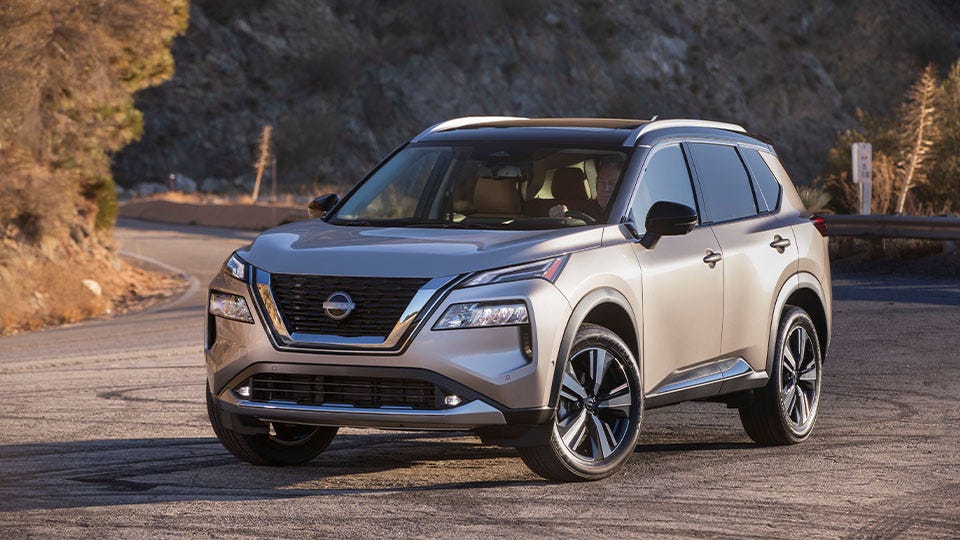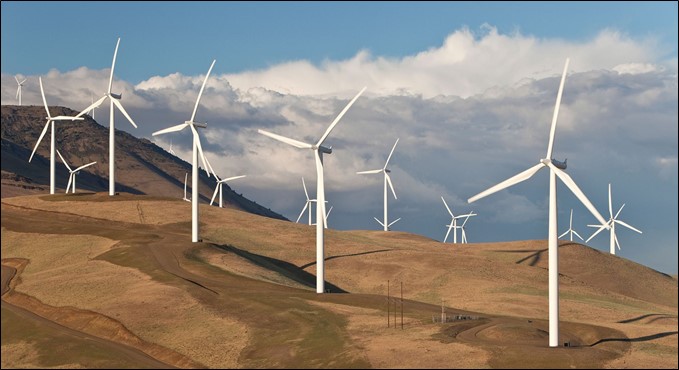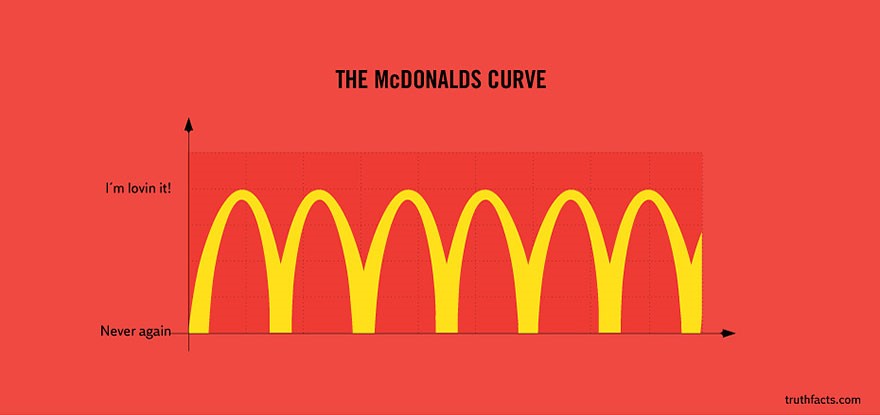|
|
||
|
||
|
Privacy Policy | Editorial Policy | Profit Policy | Join the Association | List of Members | Contact us | Index | Links |
||
|
Back Go to page: 1 2 3 4 5 6 7 8 9 10 11 12 13 14 15 16 17 18 19 20 Forward |
||
|
|
||
|
Contents.
35 Sqn end of year "Thank yous". Elec cars - are they our future?
|
||
|
|
||
|
|
||
|
|
||
|
10SU Vietnam.
Whenever people talk about the Air Force and their role in the Vietnam War, they automatically think of the units that operated aircraft, there are lots of stories about 2 Sqn’s experiences with their very efficient Canberras, 9 Sqn which operated the immediately recognised Iroquois and the best of all, of course, 35 sqn with their trusty old Caribou. But there was another unit in Vietnam, one which gets practically no recognition, but without which the RAAF in Vung Tau would not have worked and that was No 1 Operation Support Unit (1 OSU) – or 10 Sewerage Unit as it was affectionately called.
John Cridland says “I was posted to 1OSU (Dec 1969 – Dec 1970) even though it is listed in some documents as HQ Vung Tau. For the last 35 years or so I have marched with 9 SQN in Brisbane following an invite from a WOENG I knew in Vung Tau to make up their numbers. Not complaining as I have not missed out on any benefits, but think it is sad that a unit which must have had at least 500 personnel pass through its ranks is so forgotten these days.”
Originally established as Base Support Flight in May 1966, it was renamed in May 1968 to reflect the increase in its responsibilities and strength.
|
||
|
|
||
|
1 OSU, Vung Tau, 1968
10SU was similar to a Base Squadron, its staff consisted of Comcen Operations people, Orderly Room, Pay Section, Transport Section, Cooks, Service Police, Education, Radio Station Staff, Airfield Defence Guards, (many of whom were seconded to 9Sqn as door gunners), Medical Section, Air movements, Equipos and anyone else who needed a home
It returned to Australia in 1972 and was disbanded only to be reformed 12 years later at RAAF Richmond. On the 1st January 2007 the unit merged with No. 1 Air Terminal Squadron (1ATS) to form into the unit it is today. 1AOSS is currently the most diverse and dispersed unit in the Air Force, with an approximate staff of 470 permanent, reserve and civilian personnel serving at 9 permanent detachments at bases all around Australia.
35 Sqn end of year ‘Thank You’s’.
At the end of the year, 35Sqn, arguably the best Sqn in the Air Force, gathers the Sqn personnel together to thank everyone for their efforts during the year and to hand out awards to who everyone agrees was the outstanding person in a particular field.
The current Sqn and the RTFV-35Sqn Association have, over the years, formed a close relationship and this year the Sqn CO, WNGCDR Scott Egan, graciously invited several from the Association to the event, for which we thank him very much. We were met at the front gate at Amberley by FSgt Russell Reilly a bit after 9.00am, signed in and given a good look around the Sqn buildings and its aircraft. Due to the current security precautions in place at ADF bases across the country, poor old Russell had to stick to us like glue, you can bet he wished he was somewhere else, doing something else, with someone else, not tied down to a bunch of boring old buggers who talked of nothing but “when I was in…..”
Thanks Rus, we appreciated it.
|
||
|
L-R: Russell Reilly, John Sambrooks, Lloyd Godwin - inside one of the C-27s.
|
||
|
Trev Benneworth, John “Sambo” Sambrooks – the Secretary/Treasurer of the RTFV-35 Sqn Assoc.
|
||
|
Pride of place on the wall in the Squadron room is this wonderful motif which was created by aboriginal man, Maurice Woodley. Maurice was born in Cairns but moved south to Ipswich when he was 13. He is a self-taught artist who started creating artwork not long after moving to Ipswich. He works under a business which he has established called Picqui Arts.
There is a strong rumour that 35 Sqn will drop the Spartan as their emblem and early in the New Year, will revert back to Wallaby Airlines, a name that originated in and was carried with pride by 35 Sqn in Vietnam in the 1960s. The painting on the wall depicts the three major natural disasters for which 35 Sqn, the Wallaby, has supplied aid and comfort to the poor unfortunate people affected by them.
The one on the left depicts fire, the middle one drought and the one on the right, flood.
A brass plaque is mounted below the pics, it reads:
“The story of Picqui
Picqui is the Yinwum people’s Dreaming. Picqui is the Wallaby.
Picqui taught the Yinwum people the way to live. The way to live off the land, how to interact with each other, the seasons, when to hunt and our connections to land’s winds and waters. When Picqui had taught our people, he became restless on earth. He would look up into the night sky and notice how peaceful it was. He then told our people “I cannot rest here on earth, I am going to go up there into the night sky to find some rest.” He left the area of the Embley range and Wentlock river and followed a star path into the sky where he was able to rest. He then said to our people, “I have found rest up here, I am at peace. I will stay up here and watch over you from here. When you finish your time on earth, your spirit will meet me here in the sky.” When our spirits meet with Picqui, it will be decided if our spirit had enough time to reach its full potential. If it has we will become part of the spirit world or universe. If not, our spirit will be sent back to earth and be re-incarnated either as a person, an animal, a seed or a single drop of rain.”
|
||
|
Another item on display, and once again, at pride of place in the Squadron rooms, is this table of model aircraft. Each model represents aircraft that the Sqn has operated at one time since its formation at Pearce in February 1942. What a lot of people don’t know, and we won’t mention it here, but “Sambo” paid for these from his own pocket and donated them to the Sqn.
|
||
|
At 11.00am, the CO, SQNLDR Scott Egan called everyone together for the presentations. Those receiving an award were:
|
||
|
Damien “Turbo” Power
|
||
|
Mharc Crame.
|
||
|
Michelle Li.
|
||
|
Amelia Ticehurst. (We think Amelia had just told Scott a very good joke)
|
||
|
|
||
|
Michael Prince, Darious Karkaria – Northrup Grumman.
|
||
|
Yanon “Bob” Du, Jasmine Obst, Abbey Green
|
||
|
|
||
|
Evan Cannard (Sqn W/O) Felicity “Flick” Hull
|
||
|
Evan Cannard then told the troops to get back to work, it’s not Christmas yet he said!
|
||
|
|
||
|
|
||
|
Are Elec Cars a sure thing in the near future?
Toyota doesn’t think so!
You may not need to worry to much about this as its implementation could be well "after your time". Nevertheless, it makes interesting reading, particularly the quotation at the end
Depending on how and when you count, Japan’s Toyota is the world’s largest automaker. According to Wheels, Toyota and Volkswagen vie for the title of the world’s largest, with each taking the crown from the other as the market moves. That’s including Volkswagen’s inherent advantage of sporting 12 brands versus Toyota’s four. Audi, Lamborghini, Porsche, Bugatti, and Bentley are included in the Volkswagen brand family.
GM, America’s largest automaker, is about half Toyota’s size thanks to its 2009 bankruptcy and restructuring. Toyota is actually a major car manufacturer in the United States; in 2016 it made about 81% of the cars it sold in the U.S. in its nearly half a dozen American plants. If you live in the US and you’re driving a Tundra (a Hilux on steroids), RAV4, Camry, or Corolla it was probably American-made. Toyota was among the first to introduce petrol-electric hybrid cars into the market with the Prius twenty years ago. It hasn’t been afraid to change the car game.
|
||
|
|
||
|
Toyota Tundra.
All of this is to point out that Toyota understands both the car market and the infrastructure that supports it perhaps better than any other manufacturer on the planet. It hasn’t grown its footprint through acquisitions as Volkswagen has and it hasn’t undergone bankruptcy and bailout as GM has. Toyota has grown by building reliable cars for decades. When Toyota offers an opinion on the car market, it’s probably worth listening to. This week, Toyota reiterated an opinion it has offered before. That opinion is straightforward:
The world is not yet ready to support a fully electric auto fleet.
Toyota’s head of energy and environmental research Robert Wimmer testified before the US Senate recently and said: “If we are to make dramatic progress in electrification, it will require overcoming tremendous challenges, including refuelling infrastructure, battery availability, consumer acceptance, and affordability.”
Wimmer’s remarks come on the heels of GM’s announcement that it will phase out all internal combustion engines (ICE) by 2035. Other manufacturers, including Mini, have followed suit with similar announcements.
Tellingly, both Toyota and Honda have so far declined to make any such promises. Honda is the world’s largest engine manufacturer when you take its boat, motorcycle, lawnmower, and other engines it makes outside the car market into account. Honda competes in those markets with Briggs & Stratton and the increased electrification of lawnmowers, weed trimmers, and the like.
Wimmer noted that while manufactures have announced ambitious goals, just 2% of the world’s cars are electric at this point. For price, range, infrastructure, affordability, and other reasons, buyers continue to choose ICE over electric, and that’s even when electric engines are often subsidized with tax breaks to bring price tags down.
|
||
|
|
||
|
Nissan Rogue.
The scale of the change hasn’t even been introduced into the conversation in any systematic way yet. According to Finances Online, there are 289.5 million cars just on U.S. roads as of 2021. About 98 percent of them are petrol-powered. Toyota’s RAV4 took the top spot for purchases in the U.S. market in 2019, with Honda’s CR-V in second. GM’s top seller, the Chevy Equinox, comes in at #4 behind the Nissan Rogue (X-Trail in Oz). This is in the U.S. market, mind. GM only has one entry in the top 15 in the U.S. Toyota and Honda dominate, with a handful each in the top 15.
Toyota warns that the grid and infrastructure simply aren’t there to support the electrification of the private car fleet. A 2017 U.S. government study found that we would need about 8,500 strategically-placed charge stations to support a fleet of just 7 million electric cars. That’s about six times the current number of electric cars but no one is talking about supporting just 7 million cars. We should be talking about powering about 300 million within the next 20 years, if all manufacturers follow GM and stop making ICE cars.
Simply put, we’re going to need a bigger energy boat to deal with connecting all those cars to the power grids. A LOT bigger.
|
||
|
|
||
|
But instead of building a bigger boat, the US (and Australia) may be shrinking the boat they have now. The power outages in California and Texas, the largest U.S. states by population and by car ownership, exposed issues with powering needs even at current usage levels. Increasing usage of wind and solar, neither of which can be throttled to meet demand, and both of which prove unreliable in crisis, has driven some coal and natural gas generators offline. Wind simply runs counter to needs, it generates too much power when we tend not to need it and generates too little when we need more. The storage capacity to account for this doesn’t yet exist.
The US will need much more generation capacity to power about 300 million cars if they are all going to be forced to drive electric cars. Whether charging them at home or charging them on the road, they will be charging them frequently. Every servo you see on the roadside today will have to be wired to charge electric cars and charge speeds will have to be greatly increased. Current technology enables charges in “as little as 30 minutes,” according to Kelly Blue Book. That best-case-scenario fast charging cannot be done on home power. It uses direct current and specialized systems. Charging at home on alternating current through a rectifier can take a few hours to overnight to fill the battery and will increase the home power bill. That power, like all electricity in the United States, comes from generators using natural gas, petroleum, coal, nuclear, wind, solar, or hydroelectric power. Despite Austin, Texas’ experiment with purchasing a biomass plant to help power the city isn't working, biomass is proving to be irrelevant in the grand energy scheme thus far. Austin didn’t even turn on its biomass plant during the recent freeze.
Half an hour is an unacceptably long time to spend at an electron pump. It’s about 5 to 10 times longer than a current trip to the servo tends to take where pumps can push 15 – 20 litres into your tank per minute. That’s for consumer cars, not big rigs that have much larger tanks. Imagine the lines that would form at the pump, every day, all the time, if a single charge time isn’t reduced by 70 to 80 percent. We can expect improvements, but those won’t come without cost. Nothing does. There is no free lunch. Electrifying the car fleet will require a massive overhaul of the power grid and an enormous increase in power generation. Elon Musk recently said we might need double the amount of power we’re currently generating if we go electric. He’s not saying this from a position of opposing electric cars. His Tesla dominates that market and he presumably wants to sell even more of them.
Toyota has publicly warned about this twice, while its smaller rival GM is pushing to go electric. GM may be virtue signalling to win favour with those in power in California and Washington and in the media. Toyota’s addressing reality and its record is evidence that it deserves to be heard.
Toyota isn’t saying none of this can be done, by the way. It’s just saying that so far, the conversation isn’t anywhere near serious enough to get things done.
You can ignore reality, but you cannot ignore the consequences of ignoring reality!
|
||
|
|
||
|
|
||
|
|
||
|
Back Go to page: 1 2 3 4 5 6 7 8 9 10 11 12 13 14 15 16 17 18 19 20 Forward |
||

